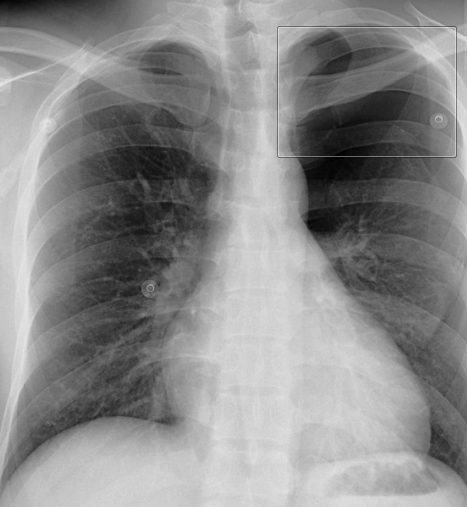The lungs are a pivotal organ responsible for the breathing process critical to human life. But what if one of them collapses (a situation known as pneumothorax)? Can you live with a collapsed lung? And if yes, how long can you live with a collapsed lung?
When the air gets deposited between the chest wall and a lung due to a hole in the lung, it develops pneumothorax, resulting in lung collapse (partial or complete). People in this condition are intrigued to know about life after pneumothorax, and this article will answer all your related concerns.
Although people can depend on one lung to survive, it can limit the extent of an individual’s capacity to do several tasks. People with this health issue often face issues such as: tiredness, breathlessness, chest pain, etc. But with time, their body adapts and depends entirely on one lung for adequate blood oxygen level.
Give this article a read to learn about it in detail and know how long you can live with a collapsed lung.
What Is A Collapsed Lung Or Pneumothorax?
A collapsed lung is a condition that develops when the air in the lungs reaches the pleural cavity because of a hole in the lungs. It hinders the lung from expanding to its normal level, thus, causing a partial or complete collapsed lung. It is also referred to as pneumothorax.
What Causes A Collapsed Lung?
This situation arises due to hard pressure on the chest or a strong hit causing lung injury or fractured ribs. It can also happen due to an underlying lung disease that often comes under the umbrella of Chronic Obstructive Pulmonary Disease (COPD).
Lungs Collapse Symptoms
- Long-term cough
- Fatigue
- Shortness of breath
- Chest pain
- Increased heart rate
- Cold sweat
How Long Can You Live With A Collapsed Lung?
The answer to this question is not that simple. It depends on several factors: age, medical history, lifestyle, dietary intake, physical endurance, and daily physical movements. That’s why a collapsed lung affects different people in different manners. Moreover, how long you can live with a collapsed lung depends upon its severity. However, a person can be expected to live 5 to 10 years or more with a collapsed lung under proper medical care.
Types Of Collapsed Lungs
Based on severity, collapsed lungs can be categorized into three types:
1. Trauma Pneumothorax
This type of pneumothorax results from a trauma or chest injury following a hole in the lung that is caused due to damage to the chest rupturing and can be mild or severe. It can happen due to a stab wound, gunshot, and excessive pressure on the chest.
2. Tension Pneumothorax
In this situation, the lung’s pleural cavity is extensively affected and can result in experiencing abnormal heart rate, increased blood pressure, or on-the-spot death.
3. Spontaneous Pneumothorax
This condition leads to several lung-related problems, such as chronic bronchitis, asthma, chronic obstructive pulmonary disease (COPD), lung cancer, etc. It is majorly seen in people with a previous lung problem history. Death from spontaneous pneumothorax is quite a rare case.
Before discussing how long you can live with a collapsed lung, you must know how to detect it. So please read further.
Which Tests Can Confirm If I Have A Collapsed Lung?
Your examiner will tell you which test to undergo after a normal check-up. Also, your previous medical history and symptoms at the very time will be considered for this purpose.
Common tests that can confirm if you have a collapsed lung are:
- Chest X-ray
- CT Scan
- Spirometry
- Chest Ultrasound
- MRI
- ECG
- Arterial Blood Gas Test
Treatment Of A Collapsed Lung
Here are typical ways to treat collapsed lungs. However, it depends on the patient’s medical history and severity of the disease.
(a) Observation & Medications
After a preliminary checkup, the patient will be asked to undergo several scans, including Chest X-ray, to monitor the situation and pressure on the lungs. Medications and treatment would be given to get control of the situation, but this method is slow for recovery.
(b) Chest Tube Insertion
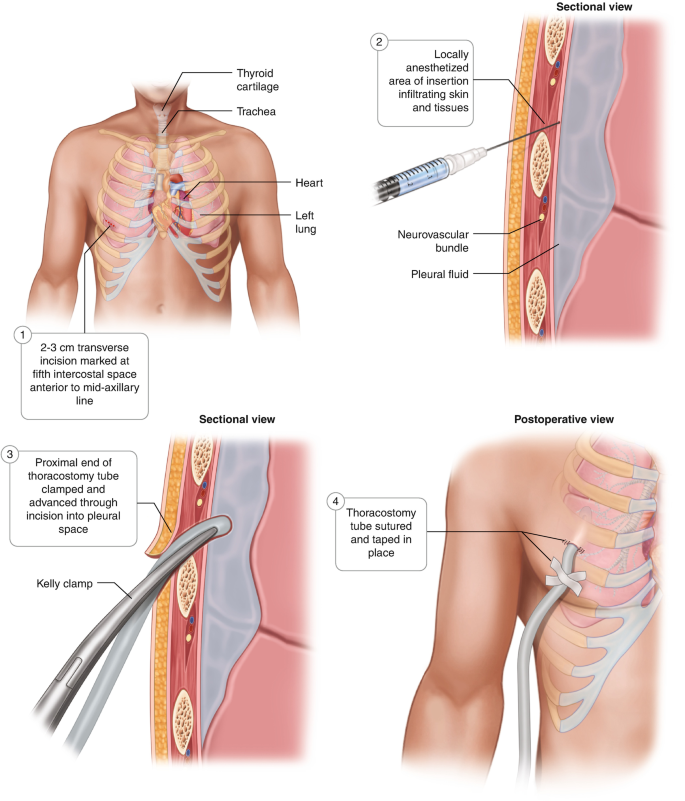
A thin and flexible plastic tube is inserted into the chest to expunge air from the cavity, in this procedure. The air might deposit again in the cavity after 1 year or 3 years, or 5 years.
(c) Chemical Pleurodesis
Your doctor might also perform a process referred to as Chemical Pleurodesis in which certain chemicals are released into the cavity between the lungs and chest wall to artificially block the pleural effusion and stop the air from depositing again.
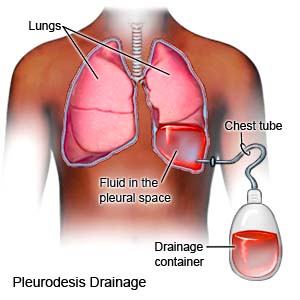
Simply put, the leakage is stopped with the help of a substance that covers the hole and prevents the air from expelling into the chest cavity. The patient might experience mild irritation in the lungs right after the treatment. The air might deposit again in the cavity after 1 year or 3 years, or 5 years.
(d) Needle Aspiration
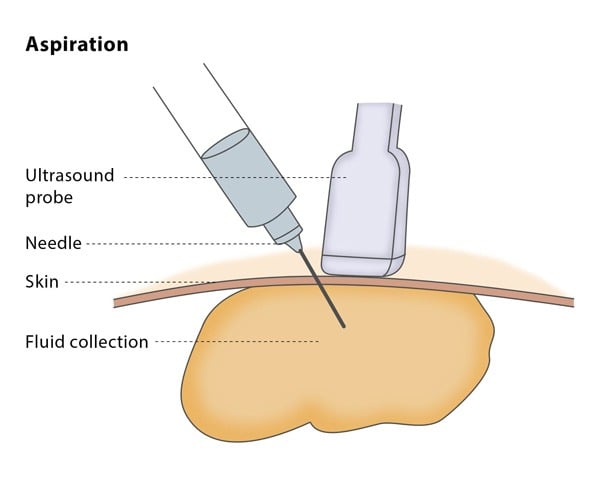
The process involves the insertion of a needle attached to a flexible tube that is fixed between the ribs, usually in the second (or third in some cases) intercostal space at the midclavicular line, on the side with the pneumothorax to expunge out the excess air. It is as effective as chest tube insertion, and the air might deposit again in the cavity after 1 year or 3 years, or 5 years.
(e) Endotracheal Intubation
Although this practice is not widely followed to treat a collapsed lung, sometimes it can be done as an additional measure with other treatments.
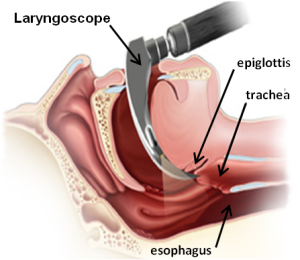
Under this procedure, a flexible tube is inserted into the trachea via the mouth (or nose in some cases) to increase the capacity of lungs to maintain adequate blood oxygen levels. It can’t be said how long you can live with a collapsed lung with this treatment.
(f) Surgery
This is the only alternative if all other methods fail to stop the problem and the patient undergoes lung surgery, wherein the surgeon removes the damaged lung or ruptured air blisters. Again, it depends on the severity of whether surgery will be done through large or small incisions.
The recurrence rate, i.e., the chances of getting back this disease and how long you can live with a collapsed lung, can vary for different treatments.
Precautions You Should Take After The Treatment Of A Collapsed Lung
Whether you’ve completed the course of oral medications or undergone a surgery to treat a collapsed lung, you must visit your doctor occasionally for a check-up and whenever you feel pain in the chest. In case of surgery, your surgeon might ask you to stay a few days under observation, which will help them assess the improvement in your condition. The precautions below affect how long you can live with a collapsed lung.
- Smoking and marijuana are quite dangerous for a patient who has received treatment for a collapsed lung. It can be lethal to your lung health and impact its functions.
- Travelling by air is unsuitable for someone who has just recovered from such a situation. It is due to the decreased oxygen levels at height.
- Work that leads to higher pressure on the lungs is also not ideal for people who recently recovered from a collapsed lung.
- Avoid going to suffocating and crowded spaces, parking, construction sites, and fireworks sites, especially in the initial phase after recovery.
- Don’t consume food items that contain saturated fats, like in large proportions like cheese, all-purpose flour, ice cream, biscuits, cake, etc., without consulting a doctor. Such food items increase the level of bad cholesterol levels in the body. Your physician might suggest wheat-based alternatives. Consult the doctor about how long you can’t have these food items.
- People who have got their collapsed lungs treated are restricted from recreational activities such as bungee jumping, scuba diving, freediving, and snorkeling. Consult the doctor about how long you can’t do such activities. You must ask your doctor before going for other activities with direct breathing support, such as helmet diving and snuba diving.
- Cosmetic surgeries are highly risky for people with collapsed lungs.
How long you can live with a collapsed lung highly depends on how seriously you follow the after-care tips.
Will A Collapsed Lung Heal Itself?
A collapsed lung may heal itself if there is minimal air leakage from the lungs. But certain health conditions, such as prolonged cough, anemia, CPOD, etc., can create problems for people with collapsed lungs. It is hard to say how long you can live with a collapsed lung without medical treatment.
Conclusion
A Collapsed Lung (or Pneumothorax) is a situation that occurs when the inhaled air seeps out from a lung and gets trapped between the chest wall. If the size of the hole is negligible, it might recover on its own. Whereas, if the size of the hole is considerably large, this is a fatal disease that can lead to death if not treated well within time.
It can occur due to an accident or deliberate attack on the chest, causing extensive pressure. The above article has discussed various important aspects of a collapsed lung, including how long you can live with a collapsed lung.

